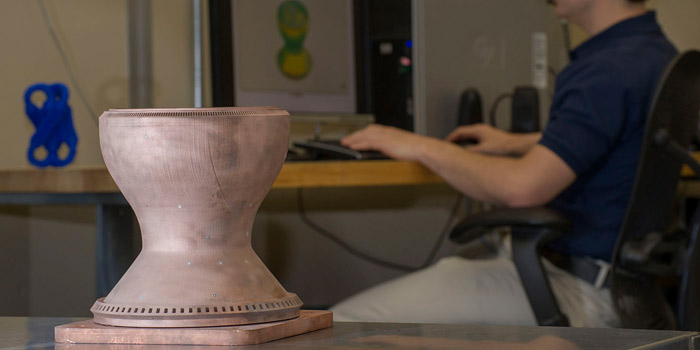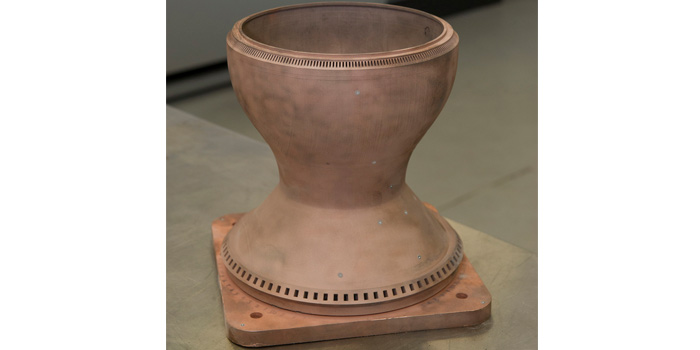NASA has announced the fabrication of its first 3D printed rocket part, a combustion chamber liner made out of copper. The US space agency believes that this achievement will pave the way for the manufacture of many such spacecraft engine components at a faster pace and reduced cost.
NASA’s employees at Marshall’s Materials and Processing Laboratory carried out this work by using a selective laser that melted and fused 8255 layers of powdered copper. The paper-thin combustion chamber liner was created in a short time span of 10 days and 18 hours.

A rocket combustion chamber holds propellants and can reach up to 5000°C in temperature. This can easily melt the chamber; hence the combustion system is lined with more than 200 intricately carved cooling channels that have re-circulating hydrogen gas super-cooled to less than 100 degrees above absolute zero (-273°C). Last November, the space agency had reached another important step by setting up the first space 3D printer onboard its International Space Station.
This accomplishment along with the successful manufacture of full scale rocket parts, will aid in the organization’s Mars journey and may prove useful during human habitation attempts on the red planet. Copper being a good conductor of heat, was tricky when it came to 3D printing. The scientists at NASA’s Glenn Research Center therefore had to initially derive a specialized copper alloy called GRCo-84.

The alloy has the necessary qualities and factors to make it suitable for additive manufacturing processes. The full scale copper combustion chamber liner was a step in the direction of NASA’s goal to build rocket engine parts faster, and at half the current costs at least. The copper chamber liner is part of the Low Cost Upper Stage-Class Propulsion Project funded by the Game Changing Development Program.
Apart from the combustion chamber liner, this NASA program has also financed 3 projects for ultra-lightweight (ULW) materials for future outer space vehicles and equipment. It has developed 3D Multi-Functional Ablative Thermal Protection (3D-MAT) technology for its Orion spacecraft.
